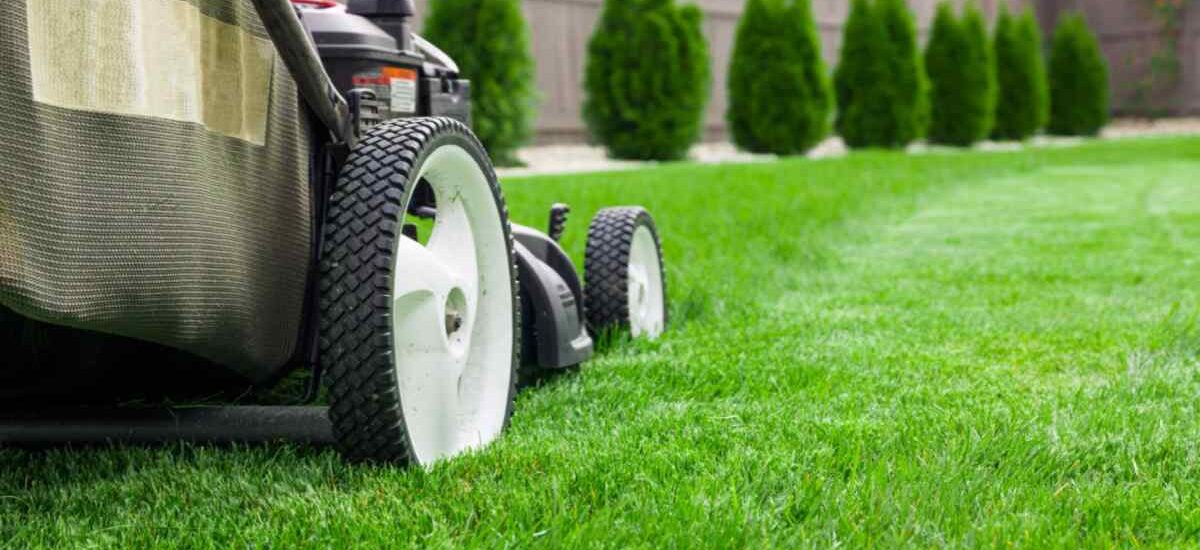Post Preview
A thriving lawn starts with understanding the fundamental principles of lawn care. This includes regular mowing, watering, and fertilization. Regular maintenance ensures a lush, green yard and prevents common issues such as weeds and pests.
Consistency is vital in lawn care. Maintaining a regular schedule for these tasks helps the grass develop strong roots and a thick turf that naturally wards off intruders. Moreover, routine maintenance reduces the chance of disease, guaranteeing that your lawn is vibrant and healthy all year round.
Fertilization 101: Nourishing Your Lawn
Fertilizing your lawn is crucial for promoting growth and resilience. Using the correct type of fertilizer at the proper times is essential, with slow-release options being recommended. A soil test is necessary to determine your lawn’s nutrient requirements and select a fertilizer with the ideal proportions of nitrogen; applying the correct fertilizer at the right times during the growing season can result in a lush, green lawn.
Addressing Common Lawn Problems
Pests, weeds, and diseases can quickly turn a well-maintained lawn into an unsightly mess. Integrated pest management and regular lawn inspections, including pest control, can help keep your lawn in top condition. For example, addressing weed problems early can prevent them from spreading. Hand-pulling, using mulch, and applying pre-emergent herbicides are effective strategies for controlling weeds without harming the lawn. Similarly, looking for signs of pest activity, such as discolored patches or visible insects, can help you take prompt action to mitigate damage.
Mowing Guidelines for a Healthy Lawn
The mowing technique is crucial for lawn health, as it prevents stress on the grass and encourages stronger roots. Aim to cut at least one-third of the grass blade at a time, and ensure your mower blades are sharp. Different grass types have varying optimal heights, with cool-season grasses like Kentucky bluegrass thriving at 2.5-3 inches and warm-season grasses like Bermuda at 1-1.75 inches. Regular mowing helps manage weeds and promotes uniform growth.
Proper Watering Techniques
Watering is crucial for lawn care, as overwatering or underwatering can cause issues. Understanding the grass type and climate conditions is essential. Water deeply but infrequently for optimal watering, encouraging deeper roots and drought resistance. Water early in the morning to minimize evaporation and fungal growth. An intelligent irrigation system can help water more efficiently, ensuring the lawn receives the necessary moisture without wastage.
Eco-Friendly Lawn Care Practices
Homeowners are adopting eco-friendly lawn care practices, such as using organic fertilizers, composting, and drought-resistant grass varieties, to reduce their environmental footprint. The EPA study highlights the benefits of using organic products over chemical alternatives. These practices are environmentally friendly and more cost-effective in the long run. Compost improves soil structure and fertility without synthetic chemicals, while native or drought-tolerant grass types reduce water usage and supplemental fertilization, making lawn care more sustainable.
Year-Round Lawn Care Tips
Lawn care is a year-round process, offering unique challenges and opportunities each season. Spring involves soil preparation and seeding, summer requires consistent watering and mowing, fall requires aeration and fertilization, and winter requires protection from harsh conditions. Understanding these nuances can help maintain a healthy, vibrant lawn throughout the year, preparing it for the growing season and preventing damage from ice and snow.






